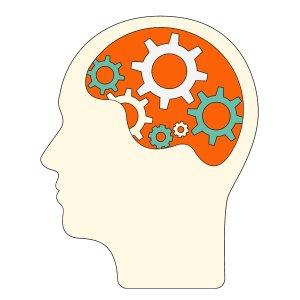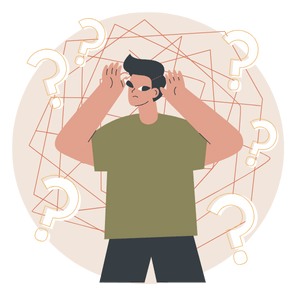Cognitive Therapy (CT), developed by Dr. Aaron T. Beck in the 1960s, has transformed the landscape of mental health treatment. By focusing on the interconnectedness of thoughts, feelings, and behaviours, CT empowers individuals to identify and challenge maladaptive thought patterns, thereby facilitating emotional and behavioural change.
This approach has proven particularly effective for a range of psychological disorders, including depression and anxiety.
What is Cognitive Therapy?

CT, also known as Cognitive Behavioural Therapy (CBT), is a structured, systematic approach aimed at mitigating psychological stress by altering dysfunctional thinking patterns.
Dr. Aaron T. Beck’s observations in the mid-20th century revealed that patients with depression often harbored persistent negative thoughts, which were skewed interpretations of reality.
These insights led to the development of CT, which focuses on challenging and replacing these cognitive distortions with more realistic and beneficial thoughts.
CT has since evolved, integrating techniques from both cognitive and behavioural frameworks. Despite this evolution, it remains distinct due to its unique focus on cognition as the entry point for intervention.
Exploring the Core Principles of Cognitive Therapy
- Cognitive Triad: This conceptual tool explores the interplay between thoughts, emotions, and behaviours, positing that reshaping negative thoughts can lead to positive emotional and behavioural outcomes.
- Collaboration and Active Participation: CT is inherently collaborative, with therapists and clients working together to identify and address cognitive patterns. Clients actively engage in self-observation and therapeutic activities outside the clinical setting.
- Empirical Grounding and Problem-Focus: This modality is grounded in empirical evidence, addressing specific psychological problems with scientifically validated strategies. Progress is tracked through measurable assessments.
- Goal Orientation and Present Focus: CT is goal-oriented and focuses on the ‘here and now,’ equipping clients with skills to tackle current challenges and prevent future relapses.
Concepts and Foundations of Cognitive Therapy
- Automatic Thoughts: These spontaneous thoughts arise in response to stimuli and can significantly influence our emotional state. CT brings these thoughts to light, scrutinizing and challenging them when maladaptive.
- Cognitive Distortions and Schemas: Cognitive distortions are biased thinking patterns that distort reality, such as ‘all-or-nothing thinking’ and ‘catastrophizing.’ Schemas are broader cognitive frameworks that can lock individuals into rigid thinking patterns.
- Core Beliefs: These deeply held perceptions about oneself, others, and the world can be either adaptive or maladaptive. CT seeks to reframe maladaptive core beliefs to improve emotional and behavioural health.
Cognitive Therapy in Practice: Key Techniques
CT employs a suite of techniques to address cognitive distortions and maladaptive beliefs:

- Cognitive Restructuring and Reframing: This technique involves deconstructing harmful thought patterns and reframing them to align with reality, reducing their negative emotional impact.
- Use of Thought Records: Clients systematically record their thoughts, feelings, and behaviours, which helps illuminate the connections between cognitions and emotions.
- Behavioural Activation and Experiments: These techniques encourage clients to engage in mood-improving activities and challenge beliefs through real-world experiments.
- Exposure Therapy and Response Prevention: Gradual exposure to fear-evoking situations helps diminish avoidant behaviours, particularly effective for anxiety disorders.
- Socratic Questioning and Guided Discovery: Therapists use probing questions to encourage clients to reflect deeply on their thoughts, facilitating insight and uncovering alternative viewpoints.
Differences Between Cognitive Therapy and Other Approaches
- Behavioural Approach
- Focus: The behavioural approach emphasizes observable behaviours and how they are learned through interaction with the environment.
- Techniques: Techniques include reinforcement, punishment, modeling, and systematic desensitization.
- Key Difference: Unlike the cognitive approach, the behavioural approach does not focus on internal thought processes.
- Practical Application: Behavioural techniques are often used for treating phobias and addictions through systematic exposure and reinforcement.
- Humanistic Approach
- Focus: The humanistic approach centers on individual experience, personal growth, and self-actualization.
- Techniques: Techniques include client-centered therapy, Gestalt therapy, and existential therapy.
- Key Difference: The humanistic approach emphasizes subjective experience and the inherent goodness and potential of individuals, rather than focusing on cognitive distortions.
- Practical Application: Humanistic therapy is often used to help clients achieve personal growth and self-understanding.
- Psychodynamic Approach
- Focus: The psychodynamic approach explores unconscious processes, childhood experiences, and deep-seated feelings and thoughts.
- Techniques: Techniques include free association, dream analysis, and transference analysis.
- Key Difference: The psychodynamic approach aims to uncover hidden conflicts and desires that influence behaviour, while cognitive therapy focuses on current thought patterns and behaviours.
- Practical Application: Psychodynamic therapy is often used to address deep-seated emotional issues and relational patterns.
| Approach | Focus | Techniques | Key Differences | Practical Applications |
|---|---|---|---|---|
| Cognitive | Thoughts, emotions, behaviours interconnection | Cognitive restructuring, behavioural experiments | Focus on changing thought patterns | Anxiety, depression, PTSD, general mental health |
| Behavioural | Observable behaviours and environmental learning | Reinforcement, punishment, modeling, systematic exposure | Focus on changing behaviours without addressing thoughts | Phobias, addictions, behavioural issues |
| Humanistic | Individual experience and personal growth | Client-centered therapy, Gestalt therapy, existential therapy | Emphasizes personal growth and self-actualization | Personal growth, self-understanding, existential issues |
| Psychodynamic | Unconscious processes and childhood experiences | Free association, dream analysis, transference analysis | Focus on uncovering unconscious conflicts | Deep-seated emotional issues, relational patterns |
Relationship Between Cognitive Therapy and Cognitive Hypnotic Psychotherapy

Defining Cognitive Hypnotic Psychotherapy
Cognitive Hypnotic Psychotherapy (CHP) integrates cognitive and behavioural techniques with hypnosis, enhancing therapeutic outcomes by engaging the subconscious mind.
By inducing a trance-like state, CHP allows for deeper introspection and receptivity to therapeutic suggestions, facilitating a more profound restructuring of maladaptive thoughts and behaviours.
Enhancing Therapeutic Processes through Subconscious Communication
In the hypnotic state, the subconscious becomes more accessible, allowing therapists to guide clients towards uncovering and addressing the unconscious roots of their cognitive patterns. This method accelerates the therapeutic process, often achieving breakthroughs where traditional cognitive approaches might stall.
Synergy between Cognitive Therapy and Hypnotic Techniques
The blend of CBT’s structured approach with hypnotic practice creates a complementary dynamic. While CT helps clients build rational strategies, the hypnotic elements of CHP engage the subconscious, fostering holistic transformation.
Case Studies Illustrating the Synergy
Empirical evidence and real-world case studies demonstrate CHP’s potency. Clients who experience limited progress with traditional cognitive approaches often find that the integration of hypnosis opens new pathways to healing. For detailed examples, please visit our case studies page.
Conclusion
Cognitive Therapy, with its robust principles and techniques, remains a cornerstone in mental health treatment, offering hope and direction to those battling psychological distress. The integration of Cognitive Hypnotic Psychotherapy represents an innovative frontier, blending cognitive principles with hypnosis to enhance therapeutic effectiveness.
By mastering CHP, psychologists can attract more clients, enhance treatment outcomes, and gain a competitive edge in the mental health market. Interested in enhancing your therapeutic toolkit with CHP? Enroll in our comprehensive CHP certification program and start transforming your practice today!

